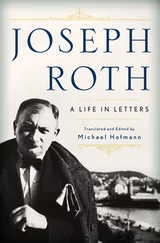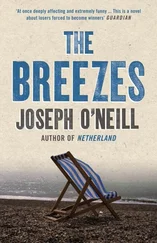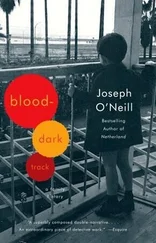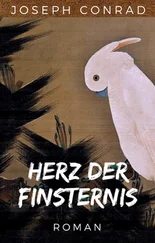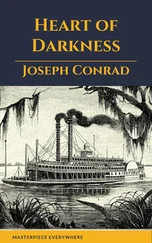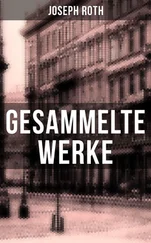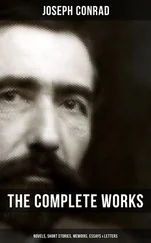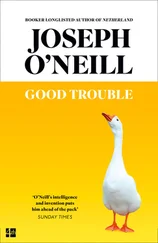Joseph O'Neill - Netherland
Здесь есть возможность читать онлайн «Joseph O'Neill - Netherland» — ознакомительный отрывок электронной книги совершенно бесплатно, а после прочтения отрывка купить полную версию. В некоторых случаях можно слушать аудио, скачать через торрент в формате fb2 и присутствует краткое содержание. Год выпуска: 2008, ISBN: 2008, Издательство: Pantheon Books, Жанр: Современная проза, на английском языке. Описание произведения, (предисловие) а так же отзывы посетителей доступны на портале библиотеки ЛибКат.
- Название:Netherland
- Автор:
- Издательство:Pantheon Books
- Жанр:
- Год:2008
- ISBN:9780307377043
- Рейтинг книги:3 / 5. Голосов: 1
-
Избранное:Добавить в избранное
- Отзывы:
-
Ваша оценка:
- 60
- 1
- 2
- 3
- 4
- 5
Netherland: краткое содержание, описание и аннотация
Предлагаем к чтению аннотацию, описание, краткое содержание или предисловие (зависит от того, что написал сам автор книги «Netherland»). Если вы не нашли необходимую информацию о книге — напишите в комментариях, мы постараемся отыскать её.
Netherland — читать онлайн ознакомительный отрывок
Ниже представлен текст книги, разбитый по страницам. Система сохранения места последней прочитанной страницы, позволяет с удобством читать онлайн бесплатно книгу «Netherland», без необходимости каждый раз заново искать на чём Вы остановились. Поставьте закладку, и сможете в любой момент перейти на страницу, на которой закончили чтение.
Интервал:
Закладка:
“You’re up by the zoo,” Chuck told me when I rang him. “Walk down Flatbush to the big church. I’ll meet you there.”
I had never been to this section of Flatbush Avenue. Every second premises, it seemed, was devoted to the beautification, one might even say veneration, of those bodily parts that continue to thrive after death: there were hair palaces, nail palaces, barbershops, African hair-braiding specialists, wig and hairpiece suppliers, nail bars, beauty parlors, unisex hairdressers. West Indian enterprise dominated. The food outlets — delicatessens, pie shops, bakeries, the very occasional restaurant — were almost exclusively Caribbean, and the music coming out of a hole-in-the-wall store was dance reggae. Presently the towers of Erasmus Hall High School came fabulously into view, promising Trebizond or Tashkent; and then I saw the leaning wooden white spire of the old Reformed Protestant Dutch church. Chuck was waiting for me by the church entrance, a phone pressed to his ear. When he was done talking, he took my arm and said, “Let me show you something, my friend.”
He led me into the graveyard at the rear of the church. Blurred ancient headstones, crumbling and toppling, filled the muddy yard. These, he told me, were the graves of Brooklyn’s original settlers and their descendants. “This entire region,” Chuck said, “everything for miles and miles around, all of it was Dutch farmland. Until just two hundred years ago. Your people.” The word “Yankee” itself, I was informed, came from that simplest of Dutch names — Jan.
He thought I’d be thrilled. But it struck me as a baffling little drama, this neglected smattering of pale Dutch farming folk who had, I learned from my friend, cleared dense hickory and oak forests, and repelled the Canarsie and Rockaway Indians, and developed the pasturelands of Vlackebos and Midwout and Amersfoort, and worshipped at this old village church, built in 1796 with predecessors going back to 1654. We walked among the headstones. A few names had not yet been completely effaced: Jansen, van Dam, de Jong…I practically heard clogs ringing on the flagstones. But then what? What was one supposed to do with such information? I had no idea what to feel or what to think, no idea, in short, of what I might do to discharge the obligation of remembrance that fixed itself to one in this anomalous place, which offered so little shade from the incomprehensible rays of the past. Also, it had quite recently struck me with force that I did not want to join the New York dead. I associated this multitude with the vast burying grounds that may be glimpsed from the expressways of Queens, in particular that shabbily crowded graveyard with the monuments and tombs rising, as thousands of motorists are daily made to contemplate, in a necropolitan replica of the Manhattan skyline in the background. A quality of abnormal neglect and dismalness attached to this proliferation of urban graves, and each time I hastened by, invariably on my way into the city from JFK, I was reminded of the tradition of oblivion in force in this city — in which, howling ambulances aside, I went for years without ever seeing a sign of funerary activity. (The moment came, as everybody knows, when that changed.)
Evidently Chuck was having related thoughts. Walking down Church Avenue he said to me, “Seriously, Hans, have you made plans for your funeral?”
From anybody else, the inquiry would have struck me as bizarre.
“No,” I said.
“I have made plans,” Chuck affirmed.
We turned off Church, and in an instant that raucous Caribbean boulevard, with its ninety-nine-cent stores and discount clothing outlets and solo sellers of cocoa butter and its grocery stores displaying yams and green bananas and plantains and cassava and sweet potatoes, had given way to a neighborhood unlike any other I’d seen in New York. Huge old houses — Victorians, I learned to call them — rose on both sides of a grassy mall, each building of a unique character. There was a plantation house with huge neoclassical columns. There was a Germanic place with dark green window frames inhabited, to all appearances, by an evil doctor from a Hitchcock movie. There was a sprawling yellow manor with countless yellow-brick chimneys and, startlingly, there was a Japanese-style mansion with upturned eaves and a cherry tree in photogenic blossom. But most striking of all was the quiet. New York City was here as still as The Hague.
Chuck’s place was on a slightly less grand block. “This is it,” he said, and for a moment I thought we were entering a vinyl-coated two-family house with a bricked-up porch and a front window conspicuously covered by an Old Glory that almost thoroughly obstructed any view of the outside world. But Chuck’s house was one lot farther along and more substantial. It had a wooden wraparound porch, six bedrooms, nicely painted clapboard, and a little tower.
Chuck led me directly to the garden and sat me down in a wicker armchair while he went indoors. Manhattan seemed far away. Lilacs bloomed, a cardinal flashed through the trees, and a serpentine hose lying in Chuck’s flower beds dribbled water out of the hundreds of holes in its coils. The day itself was perforated by the rattle of a woodpecker.
I jumped out of my chair. Squatting next to my foot was the most enormous and repulsive frog I had ever seen.
Chuck, returning at that moment from the house, shouted out happily. He bent down and picked up the monstrous fat torso and the long, uncannily flippered legs; it seemed, in fact, as if he grasped a tiny, rotund frogman. “This is an American bullfrog,” Chuck said. “It’ll eat just about anything. Snakes, birds, fish…” I followed him to the plastic fence that marked the border with the property containing the vinyl house. “There’s a pond back there. This guy must have escaped.” Lodged in the fence, I saw, were the corpses of other neighborhood frogs that had died trying to migrate into the garden with the water. Chuck dropped the bullfrog where he belonged.
I was thinking about telling Chuck the only frog story I knew — about the annual shutdown of the Duinlaan, which ran in sight of my house, to enable the safe crossing of the little frogs of The Hague — when Anne Ramkissoon appeared at the back door. She was an African Caribbean woman of around fifty, markedly paler than Chuck, with very short hair. She wore a shapeless green sweatshirt, jeans, and white training shoes. She smiled shyly as Chuck made the introductions.
“My dear,” Chuck said, “Hans and I were just admiring a bullfrog.”
Anne said, “Would you please not talk about that? We eating just now.”
“It’s true,” Chuck admitted. “Frogs are disgusting. Even in Trinidad we draw the line at eating frogs.”
“Some people eat frog,” Anne corrected him. “Mountain chicken, they call it.”
“I heard that but I never saw it,” Chuck said. “And in Trinidad, boy, we eat just about any kind of wild meat. Lappe, agouti, manicou, turtle, iguana — we hunt them and we eat them with curry, to cut the gamy taste. Curried iguana with coconut milk? Mmm.”
We went indoors and sat at the kitchen table. Anne began pouring coffee.
I made conversation. “How do you hunt an iguana?” I asked.
“Iguana,” Chuck said thoughtfully. “Well, some people might spear them, even shoot them, but we used to climb trees and just shake them down from the branches. You see, the iguana comes out in the morning sun and bakes itself on the branch of a tree. That’s your chance. One guy shakes the branch, and the other guy grabs the iguana after it’s fallen down. I tell you, you have to be quick, because an iguana is a rapid animal. My brother Roop’s specialty was hunting iguana.”
He was on his feet now, pressing halves of oranges on a manual juicer. “Roop was totally fearless — and agile? My God, he could climb anything. That maple tree outside? He would have found a way up. They used to call him the monkey of Las Lomas. I used to be very proud of his nickname,” Chuck said. “It made him seem famous. Then one day my father heard me using it and he gave me a mighty lick. ‘Never call your brother that nigger name again.’” Chuck handed out glasses of orange juice. “He died hunting iguana — Roop. He was fourteen — or fifteen, was it?” Anne said quietly, “Fifteen.” “Fifteen,” Chuck said. “That’s right. I was twelve. One day he and some friends saw the green lizard up in a silk cotton tree. Now the silk cotton is the biggest, most charismatic tree in the forest, this real giant reaching way up above all the others into the sky. You know the one I mean, don’t you? Most Trinidad people believe spirits live in the silk cotton. Nobody in his right mind would think of chopping one down. Just climbing a silk cotton is wrong — and they’re practically impossible to climb, by the way: huge bare trunks and branches covered with wild pines that’ll tear you to pieces. But Roop went right ahead. He went up this one tree and hopped over onto the silk cotton tree. He started to crawl on his belly toward the iguana, crawling along a big branch. There was a terrible explosion — like the world had exploded. They found my brother’s body on the ground. He had stopped breathing. Smoke was coming off his skin. When the old people in the village heard about it, of course, they said it was the spirits that lived in the tree. But it was lightning. My brother was killed by lightning.”
Читать дальшеИнтервал:
Закладка:
Похожие книги на «Netherland»
Представляем Вашему вниманию похожие книги на «Netherland» списком для выбора. Мы отобрали схожую по названию и смыслу литературу в надежде предоставить читателям больше вариантов отыскать новые, интересные, ещё непрочитанные произведения.
Обсуждение, отзывы о книге «Netherland» и просто собственные мнения читателей. Оставьте ваши комментарии, напишите, что Вы думаете о произведении, его смысле или главных героях. Укажите что конкретно понравилось, а что нет, и почему Вы так считаете.

